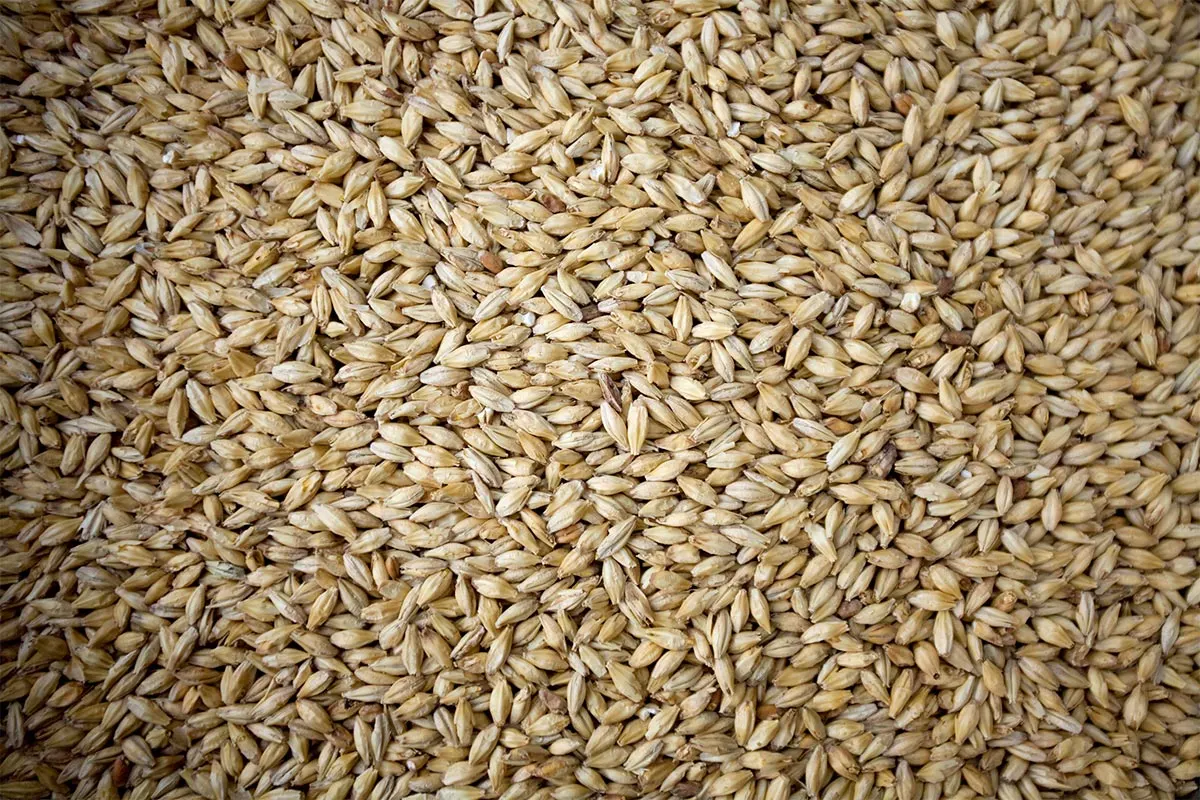If you need a barley substitute, you have several options. Quinoa, farro and brown rice are some common ingredients to consider. Let’s look for more!
Barley has been a staple food for thousands of years. It’s a bummer that it doesn’t work with a gluten-free diet. So, many individuals are hunting for barley substitutes.
Let’s discuss some barley substitutes and how to use them in your recipes.
Junp to:

What is barley?
Barley is one of humanity’s most ancient grains. It is said to have originated in the Fertile Crescent of the Middle East 10,000 years ago and expanded worldwide.
It grows well in various climates and soil types, making it a popular crop worldwide. From soups and stews to salads and pilafs, it’s a versatile grain. Animal feed and malt for beer and whiskey are further uses.
Barley is a wonderful source of fiber, protein, and minerals like magnesium and iron, making it a nutritious addition to any diet.
Barley has many varieties with different uses. Common types of barley include:
- Hulled barley: With its hull intact, whole-grain barley is the most nutritious. Soups and stews feature this chewy, nutty ingredient.
- Pearl barley: Polished barley with the outer hull removed. The most common type, used in risottos, pilafs, and salads.
- Quick-cooking barley: Partial-cooked and dried barley cooks faster than other forms. It’s a quick way to add barley to meals for busy cooks.
- Barley flakes: Steaming and rolling hulled barley make flakes. They can be added to bread, muffins, and hot breakfast cereal. A great substitute for corn flakes in the morning!
- Barley flour: Grinding whole or pearled barley produces barley flour. It replaces wheat flour in baking and provides a nutty taste.
11 best barley substitute ideas

Let’s discuss some great substitutes for barley and how you can swap them in for your usual cooking.
- Farro
For centuries, Italy has grown farro. The bran, germ, and endosperm make up farro, a whole grain.
It’s a great source of dietary fiber, protein, magnesium, and iron.
Farro can be used instead of barley in any dish calling for cooked grains due to its similar chewy texture and mildly nutty flavor. It can be cooked and served like rice or quinoa.
Farro should be rinsed and boiled in salted water until soft but still chewy.
- Quinoa
Quinoa is classified as a grain due to its consistency and culinary versatility. Not only is it a complete protein that doesn’t include gluten but also has no trouble being digested.
Like barley, quinoa has a nutty flavor and chewy texture. It’s great in salads and breakfast bowls. Rinse quinoa first to remove bitterness, then boil it in water or broth until tender.
You can try to substitute quinoa for barley in a garlic mushroom stew. It’s super easy to make and great for weight loss diets.
Check out this article if you’re looking for alternatives to quinoa!
- Brown Rice
You can get your fill of fiber, protein, magnesium, and selenium from brown rice. It’s a good gluten free substitute for barley in soups and stir-fries.
Before adding it to salted water or broth, brown rice should be washed. The nutritious benefits outweigh the somewhat longer cooking time compared to white rice.
- Bulgur
Bulgur is cracked wheat often used in Middle Eastern cooking. It tastes like barley and can be used in tabbouleh and pilafs.
Rinse bulgur and soak it in boiling water until soft before cooking. In soups and stews, bulgur can be cooked in broth.
The nuttiness of barley pairs well with vegetables and meat in various hearty soups. I’ve tried using bulgur as an alternative to barley in a mushroom soup. Both filling and delicious, it was a success!
- Wheat berries
Wheat berries are entire, unprocessed kernels of wheat. They’re chewy like barley and taste nutty. Wheat berries are high in fiber, protein, magnesium, and iron and can be added to soups, stews, and salads.
- Rhye berries
Rye berries are the complete, uncooked kernels of rye. They have an almost nutty flavor, like barley. They can be substituted in any recipe calling for grain like barley which is high in fiber and iron.
To prepare rye berries for cooking, simply boil them in salted water until they soften. Keep in mind, too, that, unlike certain other grains, rye contains gluten!
- Freekeh
Green-harvested wheat is called freekeh. Smoky, nutty wheat is roasted and threshed to make chewy freekeh that works well in soups, stews, and salads. It provides fiber, protein, magnesium, and iron.
Freekeh is commonly used in Middle Eastern and North African cuisine, but it’s becoming increasingly popular in other parts of the world as well.
- Buckwheat
Buckwheat can be used in place of barley since it tastes and feels similar but doesn’t contain gluten.
Protein, fiber, magnesium, and zinc are all found in buckwheat. It can be ground into flour and used in the preparation of pancakes and bread that are both nutritious and naturally devoid of gluten.
Buckwheat tea, or “soba cha” as it is known in Japanese, is a common substitute for barley coffee and Korean barley tea, made with roasted barley and water. Buckwheat tea has a pleasant nutty flavor, which I enjoy!
If you can’t find buckwheat, try some of these substitutes for buckwheat groats or alternatives to buckwheat flour. So that you can make healthy and gluten-free recipes anytime!
- Amaranth
This tiny grain tastes like quinoa and has a nutty texture. Gluten-free, it contains protein, fiber, iron, and calcium.
Amaranth can be used in soups, stews, and salads, or boiled like porridge for a substantial breakfast. It’s used in Indian, African, Mexican, and Central American dishes as “huautli.”
You can try amaranth to make something similar to barley breakfast porridge. I think it tastes amazing with plant-based milk, berries and pomegranate seeds (check out pomegranate substitutes while you’re at it).
You can also discover some healthy alternatives to amaranth for more inspo!
- Millet
Millet, a gluten-free grain, has a nutty taste and a little sweetness. It’s a good source of protein, fiber, iron, zinc, and magnesium.
Millet can be used to make pilafs and salads like any other grain. I love it as a barley alternative in soups and stews for its mild flavor.
- Pearl couscous
Pearl couscous, commonly known as Israeli couscous, is a pearl-shaped pasta. It’s an exciting option to replace the taste of barley.
Unlike regular couscous, which is produced from semolina wheat, pearl couscous is created with durum wheat flour and water. Its chewy texture and mild, nutty flavor complement many ingredients.
Pearl couscous adds diversity to salads, pilafs, and soups. Fiber and protein make it a healthy barley substitute.
Barley substitute FAQs

One cup of cooked barley (157g) contains 193 calories.
Some gluten-free pearl barley substitutes are quinoa, amaranth, millet, buckwheat, and rice.
Yes, you can substitute lentils for barley in some recipes that need a hearty grain-like ingredient.
Oats and barley are only similar because they’re both cereal grains. They have different nutritional profiles and textures.
Wheat is cheaper than barley since it is more extensively farmed and produced globally. The price difference depends on location and availability.
No, corn isn’t considered a good substitute for barley. While both are cereal grains, corn has a sweet, corn-like taste and a softer texture.
BOTTOM LINE: Barley can be substituted with farro, quinoa, brown rice, bulgur, wheat berries, rye berries, freekeh, buckwheat, and amaranth. All these grains like barley have unique tastes, textures, and health advantages that make them great additions to a balanced diet. If you want to alter up your grains, consider one of these options!
What’s your favorite barley replacement? Share your thoughts in the comments!
If you need more substitute ideas for your future recipes, have a look at some of my older posts. For example, these alternatives to mango are really cool as are these persimmon substitutes and mung bean substitutes!
